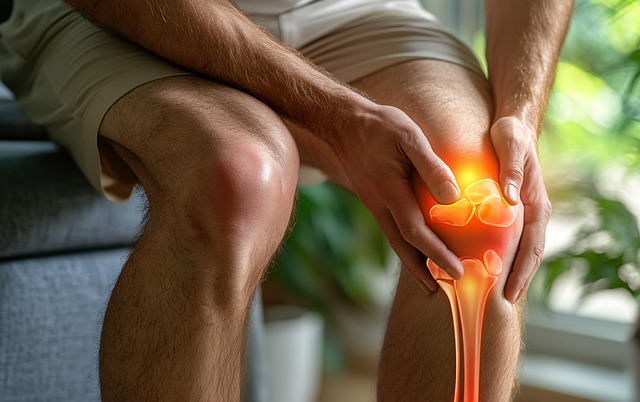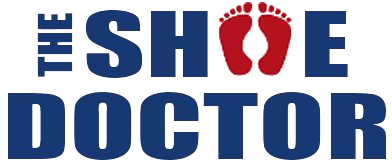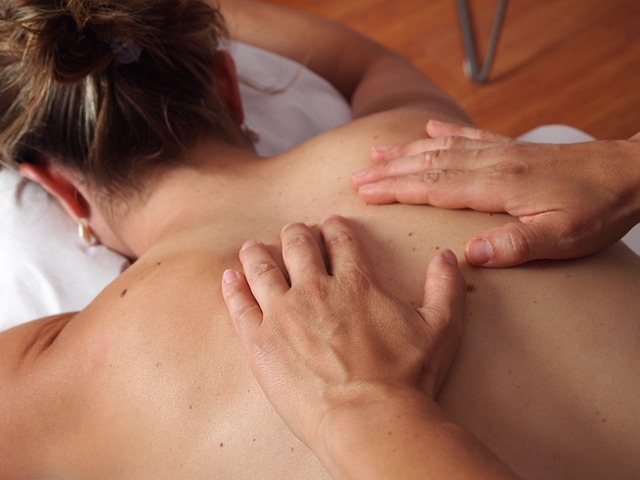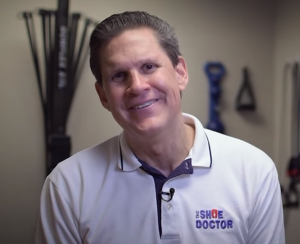Orthotics can reduce pain and correct foot/leg problems, but they don’t completely replace pain meds or prevent surgery in every case. Patients utilize orthotics to reduce pain, alter their gait and provide support, which eliminates the need for potent pain medications for some. Doctors frequently recommend them for simple issues such as plantar fasciitis, flat feet or knee pain. Occasionally, if the condition is mild or detected early, orthotics can postpone or even prevent surgery. In extreme cases, surgery or medicine may still be necessary. To know if orthotics work for you, doctors monitor your pain, health and activity. The orthotics post will discuss how orthotics work and who might find them most convenient.
Key Takeaways
- Custom orthotic devices address the root biomechanical causes, typically decreasing or completely eliminating the need for pain medication and, in certain instances, preventing the necessity for surgery for certain foot, knee, and back conditions.
- Through correcting abnormal gait patterns, optimizing alignment and supporting proper biomechanics, orthotics deliver measurable pain relief by relieving chronic symptoms throughout the musculoskeletal system.
- Orthotics as part of a comprehensive treatment plan–including regular physical therapy and lifestyle modifications–can improve mobility, reduce inflammation, and encourage long-term relief of discomfort.
- Patient compliance, foot specialist follow-up and tailored modifications are key to harnessing the full potential of orthotic therapy and driving sustained results.
- Custom orthotics, though generally more expensive initially than a prefabricated option, often provide enhanced fit, precise support, and better long-term value for those with complex or chronic foot and lower extremity problems.
- A whole-body approach to foot health recognizes the kinetic chain effects, emphasizing that improvements in foot function can positively influence posture, joint health, and overall physical performance.

The Biomechanical Solution
The biomechanical solution addresses lower limb issues using custom foot orthotics to correct the way people walk, stand or move. They are made specifically for the individual user, to the shape of their feet. They can even assist with common foot ailments such as plantar fasciitis. Custom-made orthotics help by altering the foot’s load, which can reduce tension on sensitive areas such as the plantar fascia. It doesn’t always fix the issue, but plenty of users experience reduced discomfort in activities of daily living or athletics. Some report relief in as little as three weeks — while others take longer. Research demonstrates that orthoses can get patients back to life faster, but the pain does rebound once they discontinue usage.
How these gadgets work is grounded in straightforward biomechanical concepts. Orthotics can steer the foot into improved alignment with the leg. This aids in correcting walking or running behaviors that could strain muscles or joints. For instance, if you have flat feet, an orthotic can support the arch and shift how weight flows through the foot. This adjustment can straighten the legs and hips for better posture. When supported correctly, individuals carry themselves more upright, exert less stress on joints and feel more grounded.
Better foot mechanics help more than just your feet. If the feet are aligned properly, the knees, hips and lower back feel better, too! This optimized alignment can reduce discomfort in these areas. Orthotics may help your walk or run feel more fluid and stable. For the person with weak muscles or uneven gait, orthotics can redistribute the pressure to healthier areas, providing sore spots some relief. Sometimes knee or back pain decreases because the load is now distributed more efficiently.
Orthotics don’t correct the body permanently. They work only while worn, and discontinuing use can return pain. The impact is often transient. That said, for most, it’s still enough to bypass pain meds or surgery for a spell.
Can Orthotics Replace Pain Meds?
Orthotics are inserts worn inside a shoe to support, align, or enhance the function of the foot. For individuals suffering from chronic foot or lower limb pain, orthotics are not just a matter of comfort—they can actually replace pain medications. Not only to cushion, but to correct biomechanical issues that underlie much pain. Your mileage may vary depending on the foot disorder, orthotic type and personal health.
Addressing the Source
Orthotics are commonly prescribed for plantar fasciitis, Achilles tendonitis, flat feet and high arches. Instead, a custom orthotic for plantar fasciitis provides heel support and pressure redistribution to help reduce pain at the source. By addressing these abnormal gait patterns or poor alignment, custom orthotics address the fundamental biomechanical causes of pain. This straightforward approach can make a huge difference for individuals whose aches and pains arise from structural foot issues. As a result, when it comes to addressing these root causes, significant reductions in pain and medication usage can sometimes be achieved.
Reducing Inflammation
Inflammation is one of the most common causes of persistent foot pain. Orthotic devices can reduce swelling by offering consistent padding and support to overworked areas. The soft but supported design of a lot of orthotics helps to absorb shock as well, which minimizes stress on the inflamed tissues. If you wear orthotics diligently, you’re likely to experience less swelling, which means you’ll be more comfortable getting around. Orthotics can be paired with anti-inflammatory care like ice, stretching, or physical therapy.
Improving Mobility
Orthotics can help people walk better and with less pain. When your foot is supported, your body can move naturally. Arch support is key for those who can’t leave the office because their feet are flat or have fallen arches. Others claim they can finally walk further or stand longer pain-free after initiating orthotic therapy.
Long-Term Relief
Orthotics can replace pain meds! Orthotics worn long term can provide permanent relief from pain, but need to be changed as feet evolve. Regular checkups can help make sure the orthotics are still doing the trick. Pairing orthotics with good habits, such as opting for supportive footwear and remaining active, can amplify your long-term outcomes. There is at least some research to suggest that regular orthotic wear can result in decreased pain and improved function over the course of some years.
Specific Conditions
Orthotics can really help with typical foot ailments such as heel pain, high arches and knee or back pain. Customization means orthotics can be tailored to fit specific needs like additional heel cushioning for plantar fasciitis or arch support for those with flat feet. Experts like podiatrists examine and prescribe the optimal orthotic for each situation, thereby optimizing advantage.
The Whole-Body Connection
Foot health connection with whole-body function. The foot’s 26 bones, 33 joints and over 100 muscles and tendons provide the foundation for standing, walking and posture. Tiny imperfections in foot form or motion alter pressure and motion up the body. This can trigger a cycle of joint pain, muscle exhaustion and bad balance. If the feet don’t function well, the knees, hips and back are usually picking up the slack and this can cause multi-site pain. A lot of people observe that back pain and foot pain appear hand-in-hand, demonstrating the domino effect of foot issues on the musculoskeletal structure.
Foot Problem | Impacted Area | Resulting Issue |
Flat arches | Knees, hips | Joint strain, pain |
High arches | Lower back | Muscle fatigue, aches |
Pronation issues | Ankles, knees | Instability, soreness |
Stiff big toe | Gait, balance | Poor mobility, falls |
Postural Alignment
The feet are crucial for an erect carriage. When feet are misaligned, your body may lean, twist, or hunch to compensate. This stresses your spine and hips and even neck. Orthotics can help steer feet into a superior line, which can assist the rest of the body stack up properly. Others enjoy reduced back pain and greater comfort when they begin wearing orthotic insoles. To maintain good posture, it benefits to complement orthotics with easy behaviors, such as standing straight and stretching frequently. Orthotics aren’t a magic bullet, but for those with chronic foot issues, they can be one piece of a larger strategy for reduced discomfort and improved equilibrium.
Gait Correction
Gait analysis– what’s that, you ask? With a trained eye or a computer system you can dissect every step, exposing quirks that may inflict pain. Orthotics can remedy problems such as uneven stride or wobbly ankles, smoothening each step. That can translate into less energy expended and less exhaustion — particularly for those of us who stroll or stand a lot. Certain personalized orthotics focus on more specific issues, such as a rigid big toe or limb length discrepancy, stabilizing motion. Although we still don’t know precisely how orthotics alleviate pain, most people experience improved comfort and a reduced rate of injury after employing them.
A Personal Commitment
A personal commitment, after all, is what success is made of — particularly with regard to health interventions like orthotics. Orthoticization is not passive. The patient’s drive, openness to change, and tenacity are often the deciding factors in whether or not orthotics can decrease their need for pain medication or sidestep surgery. Patients who explicitly commit to adhere to treatment plans do better, and, as we’ve discussed, we do better at hitting goals when we make commitments to others or record them. Personal commitment can take a variety of forms, but monitoring progress and accountability tend to help continue the battle even when it seems like all is lost.
Patient Compliance
Regular orthotic use is an immediate pain reliever and a long term solution. Skipping prescribed use or wearing the device only when convenient both of which simply postpone your progress and potentially reduce the benefits. Typical obstacles are discomfort, inconvenience or ignorance about how orthotics function. To address these, we might begin with reminders, adjusting to comfortable shoes, or revisiting patient handouts from providers.
It educates you on how orthotics support biomechanics, reducing pain and correcting gait. When patients know why they have to wear orthotics and what results to expect, they’re more likely to comply. Motivation counts too — people who have a real desire to regain their mobility or stay away from surgery are more likely to stay the course.
Lifestyle Factors
Daily routines determine effective orthotics. Standing for hours, or high-impact sports or walking on hard surfaces are taxing on the feet, undermining the benefits of your orthotics.
Checklist for enhancing orthotic outcomes:
- Wear supportive, well-fitting shoes daily.
- Limit time spent barefoot on hard ground.
- Schedule regular foot checks for early signs of strain.
- Maintain healthy body weight to reduce load on feet.
- Track usage and results in a journal.
Exercise, particularly low-impact exercise, keeps feet and supporting muscles strong—which reinforces orthotic action.
Physical Therapy
Physical therapy complements orthotics to focus on addressing pain and restoring function. Therapists utilize customized exercises and manual therapy techniques to reinforce the foot’s architecture and strengthen it.
1. Stretching—keeps ligaments and tendons flexible.
2. Balance training—improves stability and gait.
3. Strength exercises—focus on foot, ankle, and core muscles.
A team approach—orthotics, frequent visits to a podiatrist, therapy—is your best bet for evading surgery and cutting back on medication.

Custom vs. Off-the-Shelf
Custom foot orthotics and off-the-shelf (prefabricated) options provide two paths for individuals coping with foot pain, difficulty walking, or chronic joint stress. Custom orthotics are crafted for an individual’s foot, molded to suit his or her requirements and compensate for problems such as flat feet, high arches or an unusual gait. Off-the-shelf orthotics, on the other hand, cater to the ‘average’ foot and are more widely available in stores and online. They’re cheaper, at about $30, vs. $400 to $600 for custom orthotics. The advantage of custom orthotics is that they provide support based on actual demand, not simply a general foot form.
Custom Orthotics | Off-the-Shelf Orthotics | |
Fit | Made for one person | Made for average foot |
Cost | $400–$600 | ~$30 |
Lifespan | Lasts for years | Replaced every few months |
Support Level | Can fix foot issues | May help minor pain |
Specialist Care | Needed for assessment | Not always assessed |
Update Needs | Every two years | Replaced as needed |
Price is an important consideration. Custom orthotics have a higher front-end spend, but they endure for years and could save cash in the long run by reducing repeated purchases. Off-the-shelf orthotics wear out in a few months so they’re an ongoing expense. From a technical perspective, custom orthotics are more likely to ward off additional pain or injury, particularly for individuals with more complex foot issues. They can keep feet, knees and hips in better alignment, which might help some folks avoid pain medicine or even put off surgery. For those with minor pains or willing to experiment with a quick remedy, off-the-shelf orthotics are an easy first step, but they’re no complete solution for serious or chronic issues.
Foot specialists – either podiatrists or orthopedic experts – are instrumental in selecting the ideal orthotic. They utilize exams and scans and even sometimes walking studies to determine what a patient requires. Hence, using off-the-shelf orthotics without a fitting or check-up can do more harm, since the wrong fit can exacerbate symptoms. Custom orthotics must be updated regularly, approximately every two years, to remain in sync with the body.
Conclusion
Orthotics can help people with pain in the feet, knees or back. They support the skeleton and assist to keep joints aligned. Others use them to reduce pain meds. Others use them to avoid surgery. Your mileage may vary and not everyone will forgo meds or surgery. A good fit and real support are what count. Custom orthotics tend to work better than ones you pick up at the store. Consult with a physician or a podiatrist to discover what’s right for you. Test what’s right for your body. Be open to what works for you. Post your story or question below. Stay educated, take control of your health.
Frequently Asked Questions
1. Can orthotics reduce the need for pain medication?
Can orthotics take the place of pain medication or surgery? For others, this can mean less dependence on pain meds. Results vary and you should check with a healthcare provider.
2. Can orthotics prevent the need for surgery?
Can orthotics replace pain meds or prevent surgery. They’re frequently suggested as a conservative treatment option prior to surgery. Always consult your doctor for a custom plan.
3. Are custom orthotics more effective than off-the-shelf ones?
Custom orthotics are made to order for your particular foot. They tend to be more supportive and comfortable than the off-the-shelf variety. A practitioner can help you decide what’s best for you.
4. How do orthotics address whole-body pain?
Orthotics enhance proper alignment and balance and, as a result, can alleviate pain in your feet, knees, hips, and lower back. The right support can do your body a favor as well.
5. Are orthotics a permanent solution to pain?
Orthotics can provide long-term relief, but they don’t cure the underlying condition. Ongoing wear and periodic professional evaluation are essential for sustained advantages.
6. Who should consider orthotics for pain management?
If you have some foot pain, joint issues, or alignment concerns, orthotics might be for you. They’re great for anyone wanting to steer clear of surgery or cut back on drugs. See your specialist.
7. Can I use orthotics on my own, or do I need professional guidance?
A knowledgeable evaluation guarantees you get the appropriate type and fit of orthotics. Orthotics are not the way, off the rack, to go without a professional’s guidance. Always consult a qualified healthcare professional.
Struggling With Back or Knee Pain? Find Real Relief With Custom Orthotics From The Shoe Doctor
If everyday movements leave you dealing with nagging back pain or aching knees, your feet may be part of the problem. Misalignment in your foundation can place extra stress on joints and muscles higher up in your body. At The Shoe Doctor, our custom orthotics are designed to correct that imbalance, reduce pressure, and restore comfort so you can move freely again.
With over 20 years of experience, Russell uses advanced 3D foot-mapping technology to create orthotics tailored to your exact foot shape and movement. These orthotics do more than add cushioning—they improve alignment, support your stride, and help prevent pain from coming back. Through our partnership with the Spine & Injury Medical Center in San Jose, we also make sure your whole-body mechanics are addressed for lasting relief.
If you’re in the South Bay Area, schedule your free consultation today. Let The Shoe Doctor help you move pain-free and reclaim your day, starting from the ground up.
Disclaimer
The materials available on this website are for informational and entertainment purposes only and are not intended to provide medical advice. You should contact your doctor for advice concerning any particular issue or problem. You should not act or refrain from acting based on any content included in this site without seeking medical or other professional advice. The information presented on this website may not reflect the most current medical developments. No action should be taken in reliance on the information contained on this website, and we disclaim all liability for actions taken or not taken based on any or all of the contents of this site to the fullest extent permitted by law.


